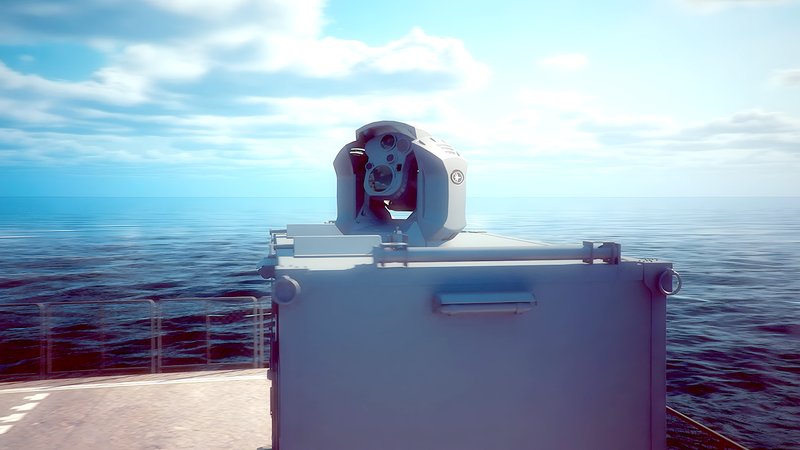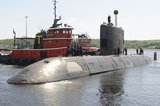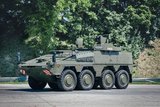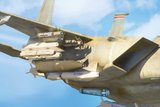Defending the Fleet: Naval air defence in the drone era (podcast)
Brought to you in partnership with Rafael
Listen on Apple Podcasts, Amazon Music, Spotify and more.
Conflicts around the globe have underscored the evolution of naval air defence. Maritime area denial is being applied in hotspots around the world, including the attacks pursued by the Houthis in Yemen. These attacks impact both classic military missions and wider shipping, boosting asymmetric warfare and disrupting trade routes, among other threats.
“It’s not always precision strike, it’s not always effective, but it's making these naval routes very risky,” noted Gideon Weiss, Rafael’s vice president of business development and marketing. “It’s making these missions very dangerous, and we see that affecting both the civilian side and the military side.”
This has significant implications for navies, leading to longer missions and the deployment of expeditionary forces in growing numbers, added Commander ‘K’, an active reserve navy officer and business development manager at Rafael.
“Every day on such a deployment can be a day of intense combat, and there could be several of those in a row,” he said, pointing to Operation Prosperity Guardian, the US-led coalition against Houthi attacks, which has deployed hundreds of interceptors in response to air threats.
Rafael’s long history
None of this is new to Rafael. The company was the first to develop a naval air defence air defence system: the Barak-1 surface-to-air missile (SAM). It also was the first to develop a remote-control stabilised gun mount for naval systems, in the form of the TYPHOON remote-controlled weapon system (RCWS).
The company’s work today includes C-Dome, a sea-based variant of the Iron Dome air defence system used on Israel’s Sa’ar 6-class corvette. This is part of a dedicated naval air defence portfolio that also includes the Naval SPIKE missile system, the SEA BREAKER long-range strike capability, and a range of electronic warfare (EW) countermeasures and other systems.
The effectiveness of these systems can be seen today, noted Weiss. During the recent 12-day conflict with Iran, dozens of drones were shot down, including by the naval C-Dome system.
“When you think about a swarm attack and an ongoing attack, the fact that these systems were able to shoot down these drones is just phenomenal,” he said.
At a time of vastly expanding threats, navies demand proven systems with low cost per intercept, which can be produced quickly and in large numbers. Crucially, they need these systems to seamlessly integrate with the sensors and effectors they already operate, agnostic to radars and similar systems, said Commander K.
“The system that can potentially be scalable with modular payloads adding to its endurance will win the battle,” he said.
Agnostic approach
The threat is now widespread and evolving, incorporating not just missiles and UAS but also unmanned surface vessels (USVs) and other dangers. Commander K noted that ships must protect themselves against such platforms, even vessels that were not built with air defence in mind.
Again, this highlights the importance of an agnostic approach. For example, the TYPHOON Mk 30-c advanced ship protection system has been adapted to US Navy ships specifically to address the C-UAS threat. Likewise, C-Dome can protect any vessel.
“What is the effectiveness of such solutions? It is being scalable, deployable and affordable,” said Commander K.

Rafael is now working to upgrade C-Dome and other systems based on real-world feedback from the Israel Defence Forces (IDF), NATO nations and other customers. This will further drive the development of a sustained and layered defence against aerial threats, said Commander K.
In an increasingly complex threat environment, in which systems must work across naval platforms and alongside different sensors and effectors, it is vital to pursue interoperability. Rafael’s systems feature open architectures that can meet the needs of different customers.
“Interoperability, multi-service [capability] and commonality across fleets is the number one consideration set,” said Weiss.
Evolving technology: lasers and beyond
Rafael is looking to the future of naval air defence and C-UAS. As a leading developer of high-energy laser (HEL) systems, including the Naval Iron Beam 100kW countermeasure, the company sees strong potential for the technology in providing “almost an endless magazine to shoot down UAS, rockets and ballistic missiles”, noted Weiss.
This approach could cut costs and logistic demands when compared to more traditional effectors, he said.
Speaking to Shephard ahead of the DSEI exhibition in London in September 2025, Weiss said the company’s small, medium and large laser systems would be one of the key technologies it will show at the event. Rafael plans to demonstrate an array of capabilities across domains and services, an increasingly important demand at a time of multi-domain threats and operations, Weiss noted.
At a wider level, the company’s strategy is to build partnerships globally. As naval air defence systems and other technologies must increasingly take an agnostic, interoperable approach, such collaboration will only grow in importance.
“We look for strategic partnerships with shipyards [so that] once they select anything from Rafael, they'll know that it will be easy, it will be smooth, it will be fast – and easy to integrate into their own system.”
Discover how Rafael’s layered defence systems are supporting navies worldwide and explore the future of naval air defence. READ MORE
More from The Shephard Defence Podcast
-
![Energy evolution: How laser defence systems are powering the next phase of air defence (podcast)]()
Energy evolution: How laser defence systems are powering the next phase of air defence (podcast)
Laser-based air defence is moving from promise to deployment as global threats evolve. In this special podcast, we explore how high-energy laser systems are reshaping interception strategies.
-
![How satcom is shaping the future of fast, accurate warfare (podcast)]()
How satcom is shaping the future of fast, accurate warfare (podcast)
"Speed is the key advantage and accuracy is the key outcome": Amazon Kuiper Government Solutions’ Rick Freeman talks to Shephard’s Georgia Lewis about how space-as-a-service is transforming defence connectivity and access to satellite capabilities.
-
![Precision on Demand: The New Age of Loitering Weapons (Podcast)]()
Precision on Demand: The New Age of Loitering Weapons (Podcast)
Loitering munitions provide vital capabilities in the disrupted and unpredictable modern battlespace, from real-time ISR to a virtually “on demand” strike capability. Rafael is looking to the future of the technology, empowering systems to operate with increasing autonomy in hostile environments.
-
![Beyond Survivability: How Active Protection Systems Are Empowering Commanders (Podcast)]()
Beyond Survivability: How Active Protection Systems Are Empowering Commanders (Podcast)
As threats diversify and intensify, APS are proving essential not just for vehicle protection but also for enhancing operational freedom, effectiveness and mission success in contested environments.
-
![Combat-proven capabilities: How precision-strike systems are evolving for tomorrow’s battlespace (podcast)]()
Combat-proven capabilities: How precision-strike systems are evolving for tomorrow’s battlespace (podcast)
Combat-tested technology is being reshaped to counter A2/AD threats, reduce reliance on GPS and enable faster, more autonomous targeting in complex environments. In this special podcast, experts explain how the evolving threat landscape is shaping next-generation strike capabilities.
-
![Why tactical UAVs are winning on the future battlefield (Podcast)]()
Why tactical UAVs are winning on the future battlefield (Podcast)
In Conversation: In this special edition of the Shephard Defence Podcast, Tony Skinner sits down with Dan Slasky, President and CEO of Aeronautics, to explore how cutting-edge tactical unmanned aerial systems are reshaping today’s battlefields.
























